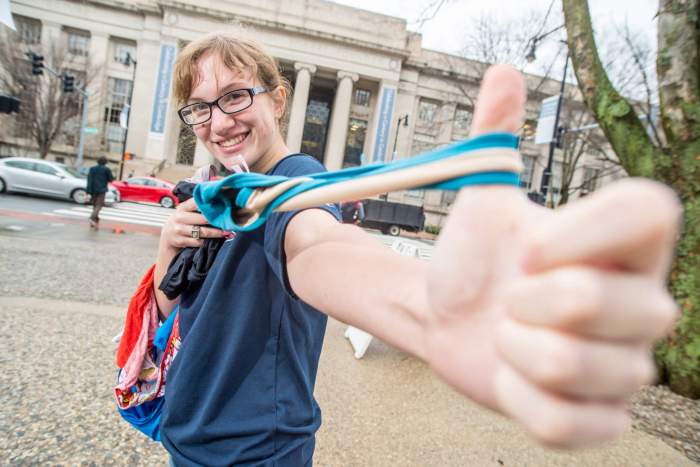If you’re diabetic, you probably have to prick yourself with a needle multiple times a day to test your blood sugar.
But what if your skin could simply display that information for you?
That’s the idea behind DermalAbyss, a project by Massachusetts Institute of Technology and Harvard Medical School researchers. The goal is to create an “interactive display” on the skin by tattooing with ink comprised of biosensors, which will change color when they detect certain chemicals.
The idea has been spurred by the trend of “wearable technology,” said Xin Liu, one of the authors and an MIT researcher — like smartwatches and FitBit activity trackers.
“We were very interested in how the future of wearables could be integrated into the human body, instead of a tech garment you wear nowadays,” she said.
The fact that a diabetic has to “literally stab themselves” several times a day to test their blood sugar got the researchers wondering “whether the body itself could express the information, instead of us doing all the machine work,” Liu said.
Liu and her fellow researchers — Katia Vega, Viirg Kan and Nick Barry from MIT, and Ali Yetisen and Nan Jiang of Harvard Medical School — have so far developed four biosensors that react to the chemical information in bodily fluid and change colors depending on the results.
Two of the biosensors measure pH; Liu said that human skin wants to have a balanced pH, but certain face washes, beauty products and other lifestyle habits can change the skin’s pH, causing dryness, eczema, breakouts and more.
The others measure glucose, or blood sugar levels, and then sodium levels, which can help us understand if we’re drinking enough water, Liu said.
“It’s not necessarily telling you data, but giving you a sense of what’s changing,” in your biochemistry, she said. “So you can behave and change your habits accordingly.”
The researchers have paired with a tattoo artist to test the biosensors in tattoos on pig skin. In the future, the tattoo process itself may become more digital with a computer controlling the amount of sensors injected into the skin and figuring out what patterns may be best as an “interface.”
The tattoos don’t have to be large or in a place that would be obvious to others, Liu said, so she sees this as an option for everyone. She acknowledges that the idea of “wearable technology” truly implemented into your skin may make some people uncomfortable, though.
“It’s superscary for the general public,” she said. “The challenge is people seeing themselves having electronics inside their own body.”
It’s important for regulations to be developed before this technology is released into the real world, she said. In the meantime, the team is waiting on feedback from submissions to influential tech conferences.
“It’s totally OK for people to worry, people should worry about all this kind of risk and problematic technology, but that’s why we have regulations,” Liu said. “People should also be very alert to everything that happens to them, and work to ask tech companies, scientists and engineers to pay more attention to this kind of technology.”


















